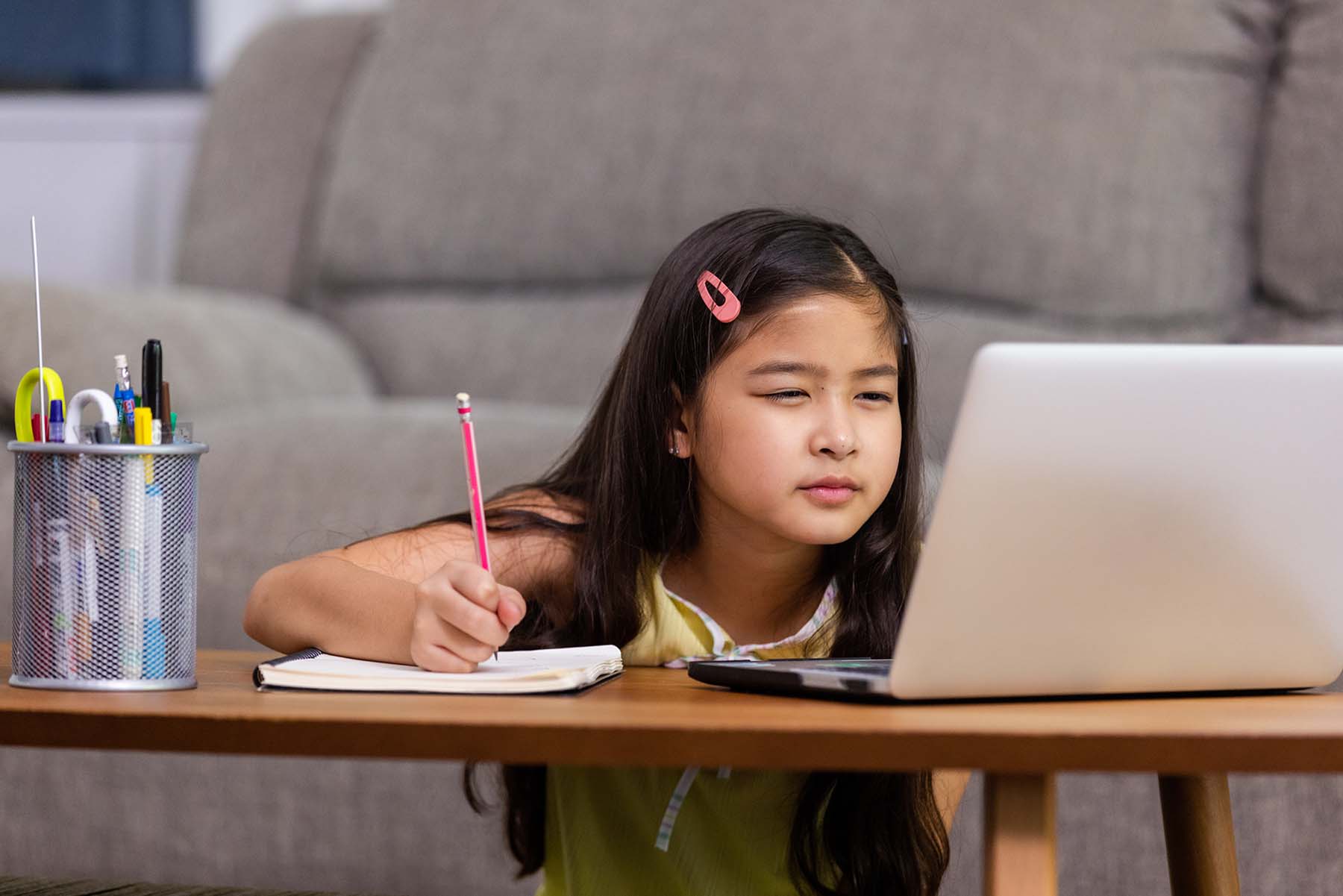School Eye Exams Can’t See Everything

Every year, most public school children in the U.S. receive routine eye exams at school. As a parent, you may assume these screenings will catch any issues with your child’s vision. But, according to the American Optometric Association, these exams “provide less than 4% of the eye tests needed to help children see, and they miss up to 75% of children with vision problems.”
One of the most common eye conditions, nearsightedness (myopia), is rising among children yet is often overlooked during routine vision screenings.
What is myopia?
Myopia is nearsightedness that occurs when the eye is longer than normal (from front to back), or the cornea at the front of the eye is steeply curved. By 2050, experts predict that half of the world‘s population will have this problem.
People with low and moderate myopia can see close objects clearly but objects farther away look blurred. People with very high myopia may experience difficulty at both distance and near viewing. Children with myopia who do not receive a diagnosis may struggle in school, sports, and social activities without understanding why. Left untreated, this genetic and progressive condition can advance faster and cause eye strain, headaches, eye disease, and vision loss.
How is myopia diagnosed in children?
Seventy-five percent of children with myopia are diagnosed by the age of 12. Eye doctors recommend that children with a family history of nearsightedness have a comprehensive eye check-up at a young age. This should be done between 13 and 18 months to detect myopia early and prevent it from worsening. Treating myopia early can significantly reduce the chance that your child develops related eye complications and requires a strong prescription requiring thick eyeglasses.
Correcting nearsightedness
Glasses and contact lenses help kids see better, but don’t stop myopia from getting worse. If your child is prescribed eyeglasses or contacts, they may need to wear them all the time or occasionally, depending on the severity of their myopia.
The latest treatments for myopia are focused on slowing the progression of the disease and preventing it from worsening over time.
Any child prescribed traditional glasses or contacts for myopia is also eligible for management treatments that can slow the progression of myopia and prevent the need for thicker eyeglasses.
These treatment options include low-dose atropine eye drops that, when used every night, slow myopia progression by preventing the eye from lengthening. This treatment is best suited for children with mild cases of myopia, young children, and those who cannot wear contact lenses (such as those with only one eye).
Doctors and parents also consider the cost of this treatment compared to other options. “There are many reasons to choose these drops, and I respect parents’ opinions and their choices for their child,” says Susanna Tamkins, O.D., Pediatric Optometrist and Management of Myopia Clinic Director at Bascom Palmer Eye Institute, part of the University of Miami Health System.
Specialty contact lenses
One type of contact is designed to manage myopia by focusing distance vision and blurring peripheral (side) vision. These contacts look and feel like the traditional kind but can slow the progression of myopia over time. If your child is prescribed myopia management contacts, they should wear the lenses daily and throw them away each night. These contact lenses have been proven safe and effective for children.
Your child’s eye doctor may recommend orthokeratology contact lens treatment (Ortho-K) instead. These specialty contact lenses, worn every night while the child sleeps, flatten the cornea. This can help improve your child’s distance vision while slowing myopia progression.
“These FDA-approved contact lenses to slow myopia are not available for patients with very high myopia (greater than -8) and patients who need high astigmatism correction,” Dr. Tamkins says. “Those children would still need to wear eyeglasses over the contact lenses. We also need to consider the cost, time and maturity of the child.”
“In my opinion, any child wearing traditional contact lenses should be changed to a lens that manages myopia,” she says. “When children are diagnosed with very low myopia or are very young, parents may hesitate. All children with myopia should be evaluated for treatment, as there are many alternatives.” These include special eyeglasses that are not yet available in the U.S. but are being prescribed in Canada and other countries. “Combination treatments are used when myopia can’t be controlled with the first chosen treatment. There have been very few research studies on the efficacy of combination treatment, but we always try.”
Can you lower your child’s risk for vision loss?
Experts say less screen time and more outdoor time can reduce the risk of myopia or slow its progression in children.
“I talk to families about screen time every day,” Dr. Tamkins says. “The goal is to eliminate recreational screen time and minimize academic screen time by opening a dialogue with your child’s teachers. But there are many factors to consider.
“Older children (age 11 and older) are often encouraged to bring their phones to class. School-age children are often given the smallest laptop screens or tablets to work on,” she says. “Even younger children (as young as pre-K) are given iReady and other computer-based homework. Also, to be accepted socially, older children need to text with their peers and become social media and game-savvy. But a family climate of control goes a long way.”
Dr. Tamkins advises parents to:
- Use larger screens whenever possible.
- Mirror your smartphone to a TV.
- Use a large-screen desktop instead of a tablet.
- During family time each night, put away all phones (parents’ phones, too).
- Play console video games that can be viewed on a TV instead of a phone or tablet.
“We all do it — hand our child a tablet for a long car ride, etc. Now we have to think twice,” Dr. Tamkins says. Get creative to limit your child’s screen time and give their eyes plenty of time to focus on something else, ideally outdoors. “Family sing along? Car bingo? Pack of cards? Puzzle? Ask yourself, ‘Does my child really need to be on their phone? Is there truly no alternative activity for this moment?”
Dana Kantrowitz is a contributing writer for UHealth’s news service.

Medically reviewed by Dr. Susanna Tamkins, a pediatric optometrist with Bascom Palmer Eye Institute, University of Miami Health System.
If you live in South Florida, and would like to schedule a thorough vision exam for your child, contact the Management of Myopia Hotline at Bascom Palmer Eye Institute at 305-482-5522 or request an appointment online.
Tags: Bascom Palmer Eye Institute, Dr. Susanna Tamkins, myopia, vision care in Miami
